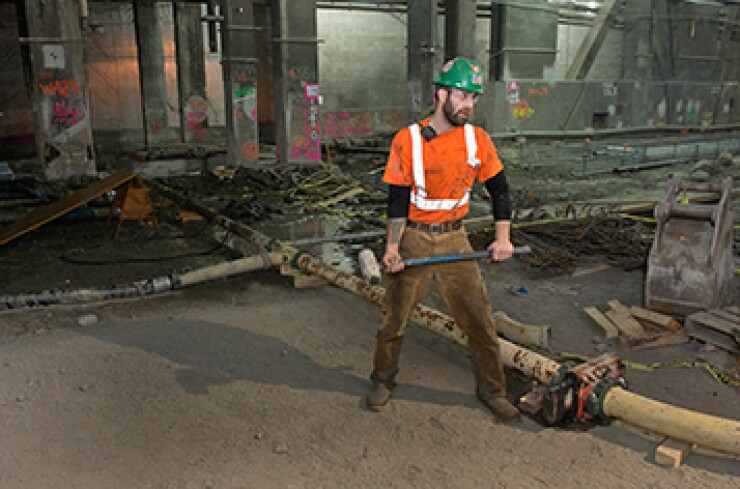
Thomas Prendergast, chairman of New York's Metropolitan Transportation Authority, peered out at a 20th-floor window in lower Manhattan and admired the weather.
"It's sunny right now. It's kind of a mild winter, but that may change overnight," he told reporters Wednesday after the board approved a $15.1 billion operating budget for 2016.
Prendergast was responding to a question about how well the agency could adapt to the next downturn or recession – the subject of a budget watchdog report earlier in the day – but his comments could easily apply to the MTA's next pending drama, final approval by a state review panel of its $29 billion capital program for 2015 to 2019.
Approval of the operating budget was perfunctory, though the board will have to approve biennial fare and toll increases for 2017 and 2019 separately. The past few years, the MTA has pegged the increases to inflation rates, usually around 2% annually.
Winning over Albany will be much more difficult, even after a year of sturm-und-drang to get buy in from Gov. Andrew Cuomo and Mayor Bill de Blasio for additional capital funding.
"It's the largest capital program we've ever had," said Prendergast. "In the normal process of bringing the capital program to the review board, they have a number of questions about its content and issues, probably even more so this time given the size of the program.
"Second Avenue is a concern," he said of the slow-moving subway extension project. "You've heard the dialogue on that. And there's a separate conversion, the issue the legislature is concerned about, dealing with funding for highways and bridges while at the same time dealing for funding for transit."
Reworking the capital program after the review board rejected it in October 2014, the MTA cut about $1 billion from the second phase of the Second Avenue subway line along Manhattan's East Side, an extension from 96th Street to 125th Street. The first phase is scheduled to open up to 96th Street in December 2016.
The move angered some transit activists and community groups.
The plan seals a $14 billion gap that triggered rejection of the previous submittal and includes an $8.3 billion commitment from Cuomo subject to legislative approval, as well as $2.5 billion from New York City – quintuple the city's original commitment.
Nearly $3 billion of the plan is self-funded through bridge and toll revenue.
State lawmakers may consider bundling Cuomo's $8.3 billion with upstate and Long Island bridge and road repair, possibly through a 30-year bond.
Citizens Budget Commission research associate Jamison Dague told board members the potential impact of a recession could cost the MTA about $1.5 billion over its five-year financial plan – or as high as nearly 4% of its 2018 budget.
"I came to share a note of caution," said Dague.
In their "Recessions and Revenues" policy paper released late Tuesday, Dague and Charles Brecher said the authority, one of the largest municipal issuers with about $36 billion in debt, could take proactive steps including more cautious economic and revenue assumptions, and an explicit rainy-day reserve, among other new policies. These moves would not add to the agency's long-term costs, they said.
"You never want to be in a position where you're unprepared," said Prendergast. "On the other end of the spectrum, you don't want to be in a position where you're holding a lot of money in reserve, more than you may need, that holds back your ability to grow service and provide safe and reliable service.
"I do think we're doing all the appropriate things to have reserves in place should an event like that occur."





